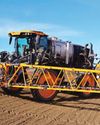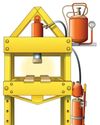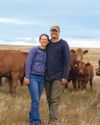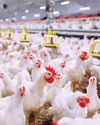
At first, Greg and Jenny Rowland planted cover crops to help control erosion on their soybean and popcorn farm near Hardinsburg, Indiana. But, after a few years, the additional benefits have changed the way they think about soil health.
“Better water infiltration, nutrient cycling, and increased organic matter,” Greg says. “When I see the worms really working on the biomass that’s left, I can really see the soil biology and how it’s all cycling and building organic matter.”
The 2022 USDA Census of Agriculture reported 18 million acres of cover crops planted across the U.S., an increase of 2.6 million acres from 2017. But this is far from conservation leaders’ goal of 50 million acres. Concerns about equipment, time, and yield impacts contribute to cover crop hesitancy.
Rob Myers, director of the University of Missouri Center for Regenerative Agriculture, believes financial incentives, seeding services, and variety improvement will help close the gap. “I think it will take a combination of approaches,” says Myers, also North Central Regional Director of Extension Programs for Sustainable Agriculture Research and Education (SARE). “We are seeing farmers getting more comfortable with the idea of cover cropping and the benefits they provide.”
Meyers compares cover crops to a Swiss Army knife that offers a broad set of tools to address various field and farming goals. Besides enhancing soil health, cover crops help reduce soil erosion, sequester soil carbon, improve weed control, manage nutrients, and increase water quality.
Grazing
Wintering beef cows once was “pretty traditional” on Jerry Doan’s Black Leg
This story is from the May - June 2024 edition of Successful Farming.
Start your 7-day Magzter GOLD free trial to access thousands of curated premium stories, and 9,000+ magazines and newspapers.
Already a subscriber ? Sign In
This story is from the May - June 2024 edition of Successful Farming.
Start your 7-day Magzter GOLD free trial to access thousands of curated premium stories, and 9,000+ magazines and newspapers.
Already a subscriber? Sign In

Hagie's Sprayer, Built With Deere Tech
The Hagie STS16 with 120-foot boom comes factory-installed with John Deere See and Spray Premium.

No-Spring Hydraulic Press
Air-return shop press makes for easier positioning.

The Disappearing American Farmer
A new book examines this trend and how it can be stopped.

60-Year Partnership Still Going Strong
Gil Tinsey and Fred Hasen met in college and have been farming together in Michigan since the 1960s.

A NewGeneration Farm
Regenerative agriculture spurs growth at Sather Farm and Ranch.

Yields Increase With Lime
Managing soil pH could increase crop production.

Solar Harvest Coming to a Field Near You
More research and work is being done to expand the use of agrivoltaics in North America.

The Cost of Leadership
When parents won't make decisions, it’s difficult for farming heirs to set goals.

The Power of Artificial Intelligence
How animal agriculture is reaping the benefits of Al.

Shutdown
lowa plant is first casualty in USDA meat processing initiative.